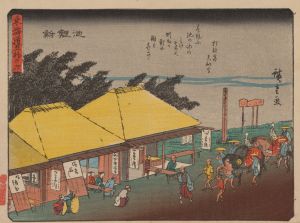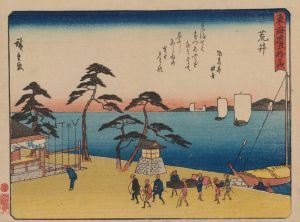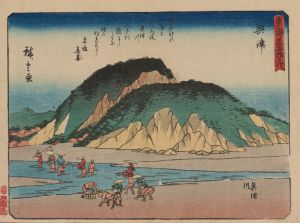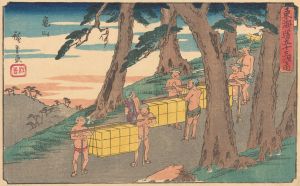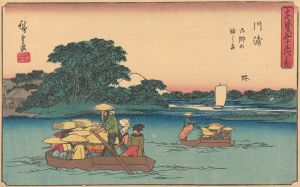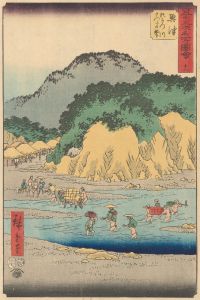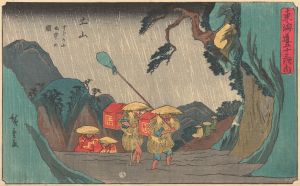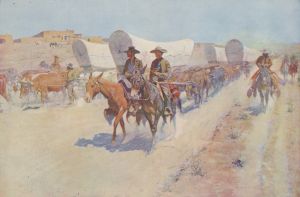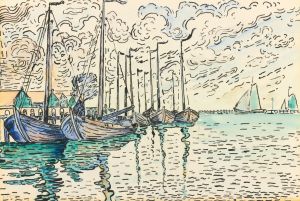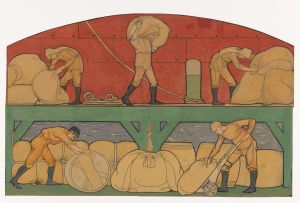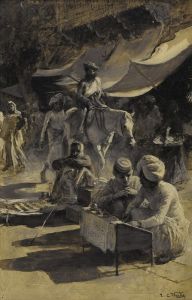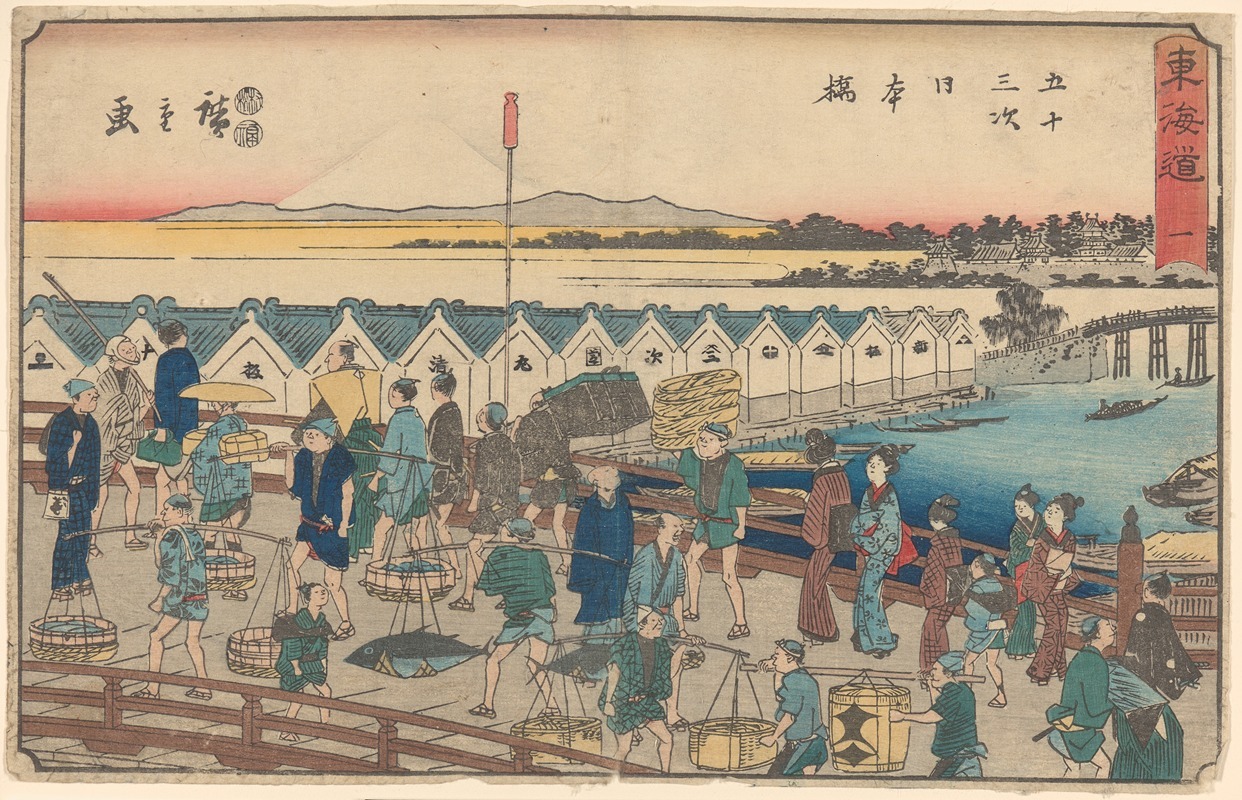
Nihonbashi, Porters, etc. on Bridge
A hand-painted replica of Andō Hiroshige’s masterpiece Nihonbashi, Porters, etc. on Bridge, meticulously crafted by professional artists to capture the true essence of the original. Each piece is created with museum-quality canvas and rare mineral pigments, carefully painted by experienced artists with delicate brushstrokes and rich, layered colors to perfectly recreate the texture of the original artwork. Unlike machine-printed reproductions, this hand-painted version brings the painting to life, infused with the artist’s emotions and skill in every stroke. Whether for personal collection or home decoration, it instantly elevates the artistic atmosphere of any space.
Andō Hiroshige, a renowned Japanese ukiyo-e artist of the Edo period, is celebrated for his landscape prints and depictions of everyday life in Japan. One of his notable works is "Nihonbashi, Porters, etc. on Bridge," which is part of his famous series "The Fifty-three Stations of the Tōkaidō." This series, created in the early 1830s, illustrates the various stations along the Tōkaidō road, a vital route connecting Edo (modern-day Tokyo) to Kyoto. Hiroshige's work is known for its vibrant colors, dynamic compositions, and ability to capture the essence of Japanese culture and scenery.
"Nihonbashi, Porters, etc. on Bridge" specifically depicts the Nihonbashi Bridge, a significant landmark in Edo. Nihonbashi, meaning "Japan Bridge," was the starting point of the Tōkaidō road and served as a bustling hub of commerce and travel during the Edo period. The bridge was a central point for merchants, travelers, and goods moving in and out of the city, making it a symbol of economic activity and connectivity in Japan.
In this print, Hiroshige captures the lively atmosphere of the bridge with meticulous detail. The scene is populated with porters carrying goods, travelers preparing for their journeys, and various individuals going about their daily activities. The composition reflects the hustle and bustle of Edo life, with figures depicted in motion, emphasizing the dynamic nature of the bridge as a thoroughfare.
Hiroshige's use of perspective and color in this print is noteworthy. He employs a bird's-eye view to provide a comprehensive look at the bridge and its surroundings, allowing viewers to appreciate the scale and significance of Nihonbashi. The colors are vivid yet harmonious, typical of Hiroshige's style, which often used a palette that balanced realism with artistic expression. The print also features subtle gradations of color, a technique known as bokashi, which adds depth and dimension to the scene.
The "Fifty-three Stations of the Tōkaidō" series, including the "Nihonbashi" print, played a crucial role in popularizing the Tōkaidō road and the landscapes of Japan. Hiroshige's work provided a visual travelogue for those who could not journey along the road themselves, offering a glimpse into the diverse scenery and culture of the regions along the route. His prints were widely circulated and appreciated both in Japan and abroad, influencing Western artists and contributing to the Japonisme movement in Europe.
Hiroshige's depiction of Nihonbashi not only serves as an artistic representation of a specific location but also as a historical document that captures the essence of Edo-period Japan. Through his work, viewers gain insight into the daily life, commerce, and travel of the time, making "Nihonbashi, Porters, etc. on Bridge" a valuable piece of cultural heritage.





